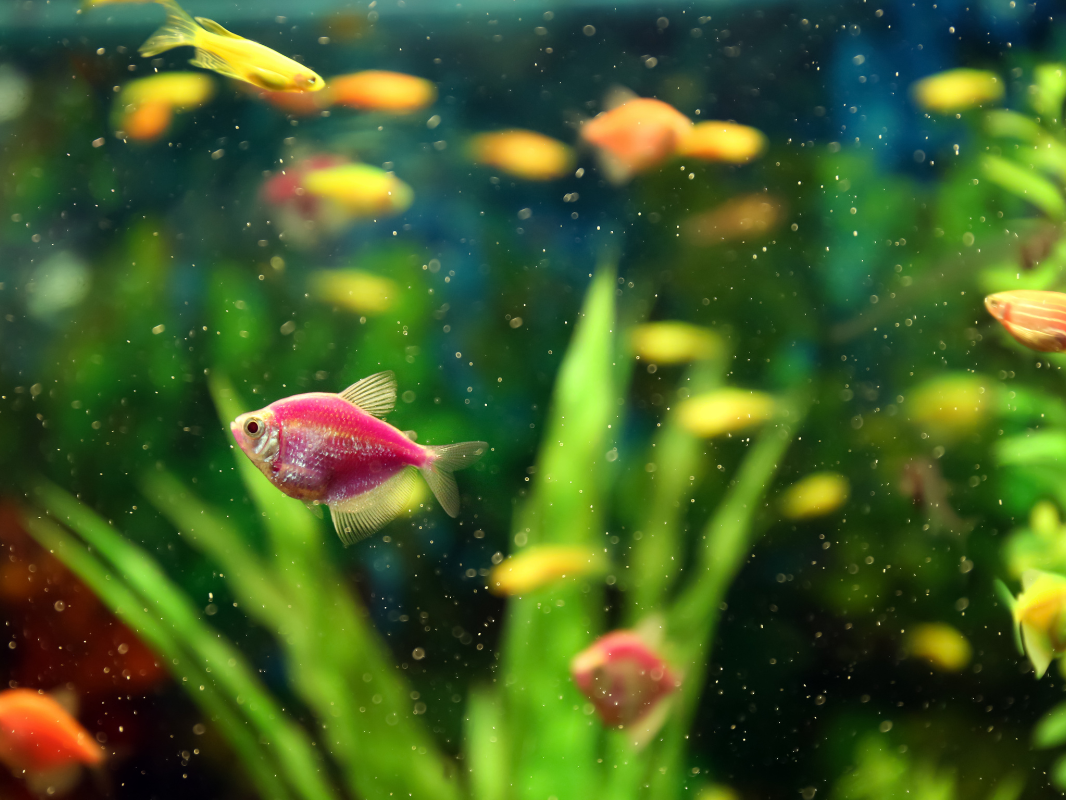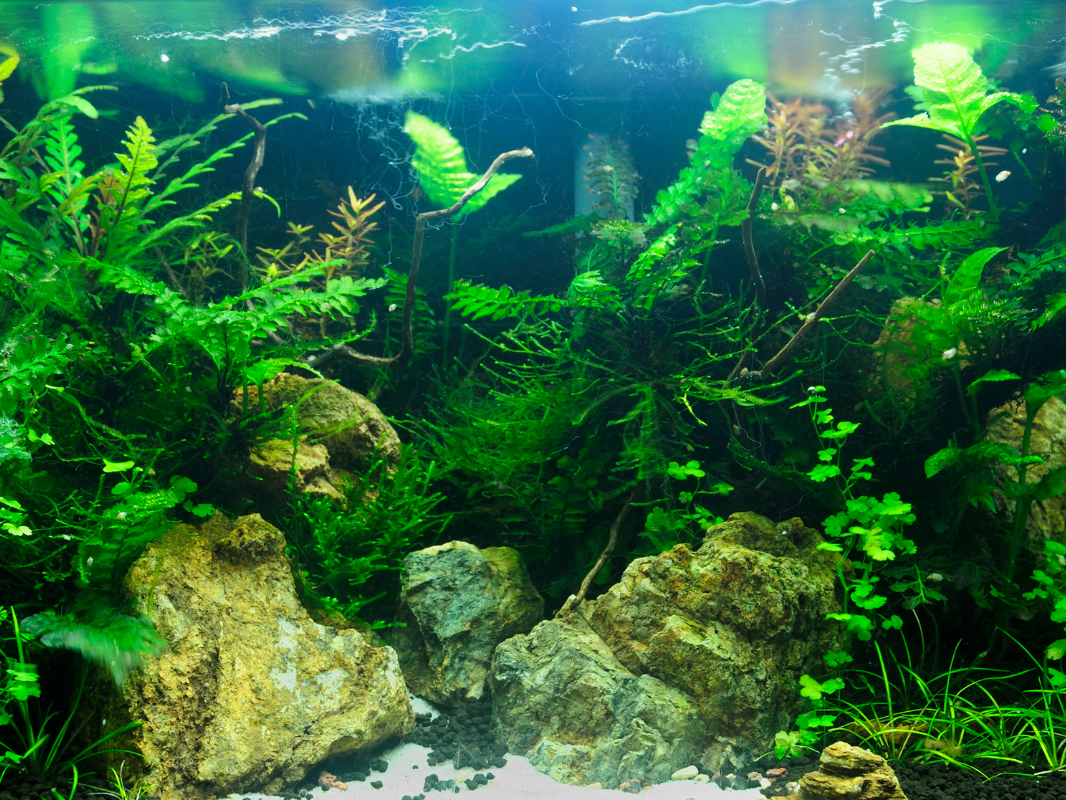Hey there, fellow fish enthusiasts! Are you ready to dive into the world of fish food? Whether you’re a seasoned aquarist or just starting, understanding the different types of fish food is crucial for keeping your finned friends happy and healthy. Let’s explore this fascinating topic together, and I promise to keep it fun and informative!
Jump to:
Dried Fish Food: A Staple in Aquatic Diets
Dried fish food is a go-to for many aquarists, and it’s easy to see why. It’s not only the most budget-friendly option out there but also comes in a variety of recipes to cater to different dietary needs, whether your fish are carnivores, herbivores, or omnivores. Plus, it’s super easy to find in any pet store.
Register for our latest in-depth reviews and product round-ups from the experts
Enter your email address below to receive our twice monthly reviews emails.
By entering your details, you are agreeing to our terms and conditions and privacy policy. You can unsubscribe at any time.
Flakes and Crisps: The Popular Choice
- Flakes: Perfect for top and mid-feeding fish, flakes are the most recognized type of fish food. They’re great for surface feeders but tend to lose nutrients quickly in water. Pro tip: If they’re too big, just crush them into smaller pieces!
- Crisps: These are like the denser cousins of flakes. They float longer, dissolve slower, and retain nutrients better. They’re a bit pricier but worth it for a cleaner tank and less waste.
Pellets: Sinking and Floating Varieties
- Floating Pellets: Ideal for top feeders like bettas. They stay afloat longer but watch out for potential bloating issues in some fish.
- Slow-Sinking Pellets: These gradually fall to the bottom, perfect for shy mid-feeders.
- Fast-Sinking Pellets: Heavy and nutrient-packed, these are a feast for bottom dwellers like plecos.
Stick-on Tablets and Wafers: For a Closer View
- Stick-on Tablets: Want to watch your fish feast up close? Stick these tablets to your tank’s glass and enjoy the show!
- Wafers: These sink quickly and soften over time, making them ideal for bottom feeders who like to nibble.
Freeze-Dried Foods: The Convenient Choice
Freeze-dried foods, like blackworms or bloodworms, are a hit among many fish species. They have a long shelf life and can be easily crumbled for smaller fish. Plus, they’re a great way to provide a nutritious meal without the hassle of live food.
Vacation Fish Feeders: Your Fish-Sitter
Planning a trip and worried about your fish? Vacation fish feeders are your solution. These slow-release blocks can feed your fish for up to two weeks. Just make sure to do a test run first to see how your fish react and to check the water quality.
Frozen Foods: The Nutrient-Rich Option
Frozen foods are a fantastic way to provide the benefits of live food without the risk. They’re typically single-ingredient foods, like brine shrimp or bloodworms, frozen into convenient cubes. Thaw them or add directly to your tank – your fish will love it either way!
Live Foods: For the Traditionalists
Live foods were the original diet for aquarium fish. While they’re not as common now, thanks to the variety of commercial foods available, they’re still a great source of nutrients. Just be cautious about sourcing to avoid introducing diseases into your tank.
Tables Packed with Fish Food Facts
Let’s break down some key information about these food types in handy tables:
Table 1: Dried Food Varieties
| Type | Best For | Nutrient Retention | Price Range |
| Flakes | Top/Mid Feeders | Low | $ |
| Crisps | Top/Mid Feeders | Medium | $$ |
| Pellets | Specific to Type | High | −
−$ |
| Wafers | Bottom Feeders | High | $$ |
Table 2: Live vs. Frozen Food
| Type | Shelf Life | Nutrient Quality | Ease of Use |
| Live | Short | High | Requires Care |
| Frozen | Long | High | Very Easy |
Specialized Fish Food and FAQs: Nourishing Your Aquatic Buddies
Now we’re going to explore some more specialized options and tackle those burning questions you might have. Remember, the right food not only keeps your fish healthy but also vibrant and active. So, let’s get swimming into the details!
Specialized Fish Food: Tailored Nutrition for Your Fish
Every fish is unique, and sometimes, they need a diet that’s as special as they are. Specialized fish foods are formulated to meet the specific dietary needs of different species, ensuring they get all the nutrients they need.
Herbivore, Carnivore, and Omnivore Diets
- Herbivore Diets: These are rich in plant materials and perfect for fish that graze on algae and plants.
- Carnivore Diets: Packed with protein, these diets cater to meat-loving fish, providing them with the necessary animal proteins.
- Omnivore Diets: A balanced mix of plant and animal-based foods, ideal for fish with a varied diet.
Breeding and Fry Foods: Supporting Growth
- Breeding Foods: Enhanced with nutrients to support breeding fish and ensure healthy egg development.
- Fry Foods: Tiny and nutrient-dense, these foods are designed for the smallest mouths in your tank.
Environmental Considerations: Sustainable Fish Feeding
As fish lovers, we also need to think about the impact of fish food production on the environment. Sustainable fish feeding is not just about what’s best for our tanks, but also what’s best for the planet.
Sustainable Ingredients and Practices
- Eco-friendly Ingredients: Look for foods made with sustainable ingredients that don’t deplete natural resources.
- Reducing Waste: Opt for foods that produce less waste, keeping both your tank and the environment cleaner.
FAQs: Answering Your Fish Food Queries
You asked, and here are the answers! Based on popular questions from fellow fish enthusiasts, let’s clear up some common confusions.
It varies, but most fish do well with being fed once or twice a day. Overfeeding can lead to water quality issues, so it’s better to feed small amounts that your fish can consume in a few minutes.
It’s not recommended. Fish require specific nutrients that human food doesn’t provide. Stick to fish food for a balanced diet.
Most healthy adult fish can go a few days to a week without food. However, this isn’t ideal, and regular feeding should be maintained.
Tables with More Fish Food Insights
Let’s look at some more tables packed with useful info:
Table 3: Specialized Fish Food Types
| Diet Type | Best For | Key Ingredients |
| Herbivore | Plant-eating Fish | Algae, Spirulina |
| Carnivore | Meat-eating Fish | Krill, Shrimp |
| Omnivore | Mixed-diet Fish | Combination of Plant and Animal Sources |
Table 4: Environmental Impact of Fish Food
| Aspect | Consideration | Impact |
| Ingredients | Sustainability | Lower Environmental Footprint |
| Waste | Biodegradability | Healthier Aquatic Ecosystems |
Martin Cochran
Dive into fish care with Martin, your guide from the coastal beauty of Brighton. He shares tips on keeping your aquatic companions happy and healthy. Join him on a fin-tastic journey where every swim is a voyage of joy. Trust Martin for a smooth sailing aquatic experience.




